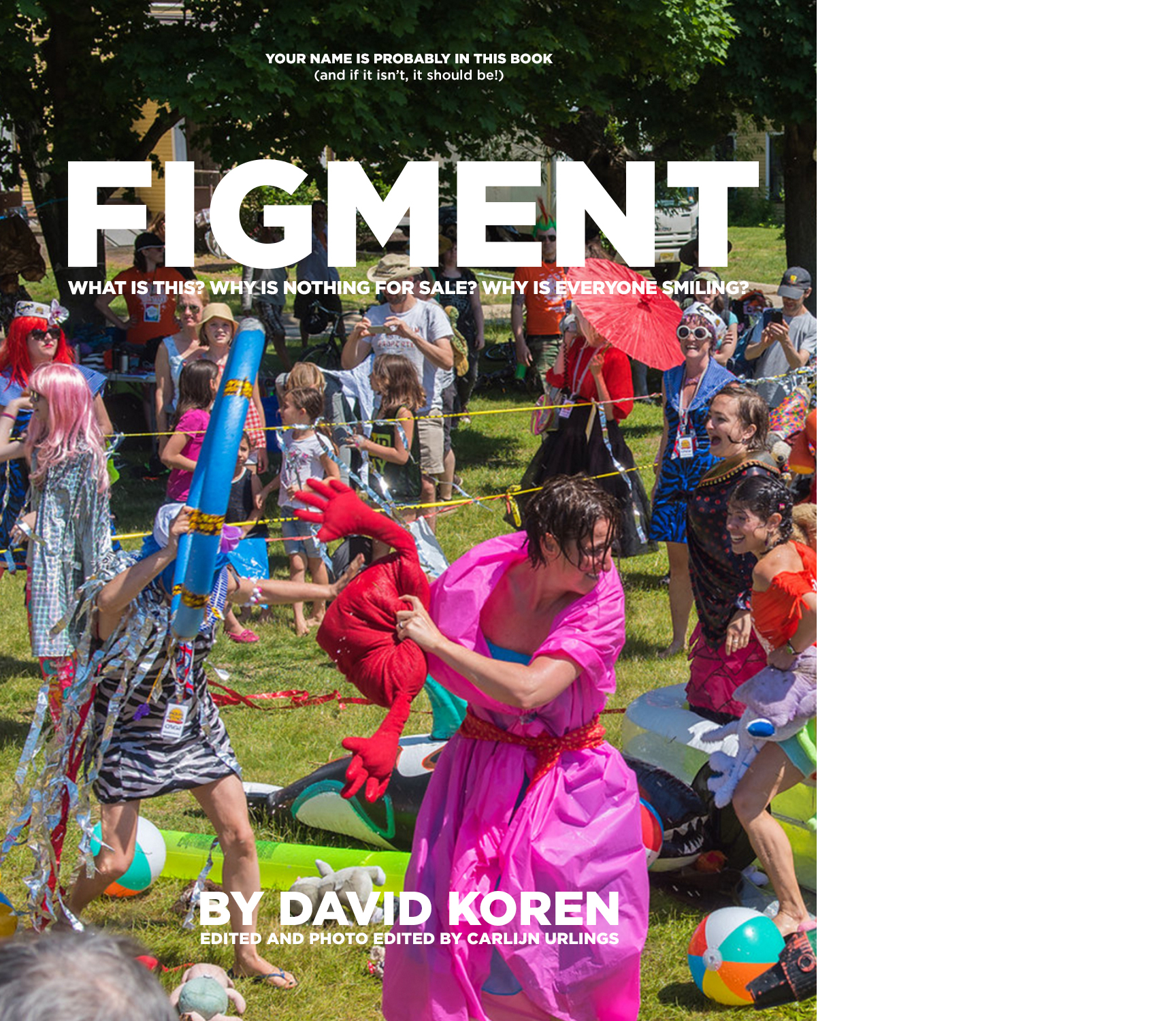by: ac
It seems to be a rite of passage for shoestring arts institutions to publish a book for a crucial anniversary. This book, compiled by FIGMENT founder David Koren and edited by Carlijn Urlings, is representative of the FIGMENT ethos, sometimes maddeningly so. The breezy narrative takes the reader through Koren’s sometimes insights, sometimes musings on the origins of FIGMENT, and the complexities of producing arts-based programing in and outside of the United States. FIGMENT: What Is This? Why Is Nothing for Sale? Why Is Everyone Smiling? presents a challenge for a reviewer because much of the text is a disclaimer for the document before you; Koren tells us that “this is not the FIGMENT book, it is a FIGMENT book.” So, in that spirit, this review is about both books.
The most authoritative and insightful parts of FIGMENT are when Koren guides the reader through the mechanics of an arts nonprofit. Here, his light-touch delivery is potent and exciting, making any reader feel ready to produce their own arts festival. As an arts producer, he combines infectious enthusiasm and a sharply honed management style specifically for the artistic by nature. This book, in all its off-handedness and casualness, is truly a guide book for arts administrators; this is a book that will make you want to do things! FIGMENT’s next book could be a straight up “how-to” for arts management.
Life lessons, poems about the human condition, and personal moments abound in the narrative. Certainly, FIGMENT is a premier example of the constraints of freedom and the rigor of inclusive participation. However, in the next FIGMENT book, it would be interesting to gain more insight into the work that has been produced at the arts festival.
Koren has a healthy relationship with money and consumerism, so FIGMENT doesn’t read as a Marxist tome. The book includes some insightful discussions about how to fund projects and the need for FIGMENT-type initiatives in cities like Detroit and Jackson, Mississippi. Koren insists on his volunteers operating as professionals: “Being a ’professional’ isn’t about making money, it’s about taking what you do seriously and treating others with respect.”
Another moment of lucid explanation is when Koren speaks about a moment at Alpha, another participatory arts event produced following the success of FIGMENT. At this nighttime program, he witnessed an all-participatory confluence. At one point, he observes, there was no audience; everyone was “involved.” This is Koren’s ultimate aspiration – an art event where the audience and the artist become one. In his next book, I would love to hear his thoughts on the nature of audience participation today. Given his experiences, his insights could rival those of philosopher and cultural critic Walter Benjamin. I look forward to a comparison between Benjamin’s The Storyteller and the nature of the FIGMENT festival.
For Koren, the Burning Man festival had a huge impact on the genesis of FIGMENT – this book constantly reiterates that relationship. In reality, the relationship is fleeting. Where Burning Man is undoubtedly impactful, Koren considers that what FIGMENT does is far more democratic and accessible than the increasingly elitist Burning Man – no Humvee campers and leather bikinis on Governors Island. FIGMENT is an arts festival for the people, where duct taped and “janky” aesthetics are paramount. A favorite aspect of the book is the not-so-composed imagery throughout. Although FIGMENT has had some “break the internet” moments, including the umbrella pavilion in the summer of 2015, winner of the AIANY ENYA co-sponsored City of Dreams Pavilion competition, its virtue is in its not so “Instagrammable” moments. Koren can now leave Burning Man behind and know that FIGMENT has changed many people’s lives, and has made all reconsider what art is.








